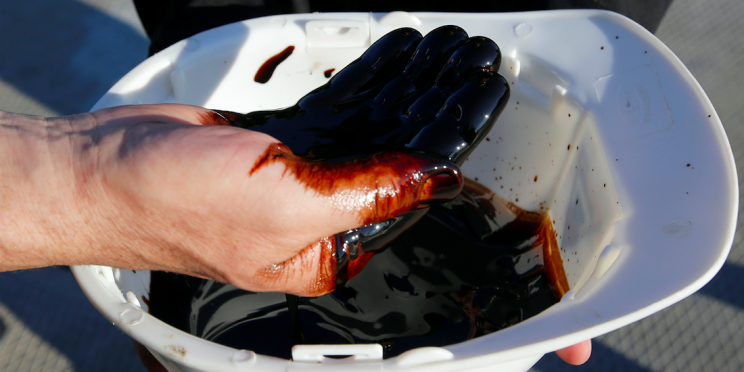Two commodities veterans are calling for $100 oil in 2018

Longtime global commodities experts Leigh Goehring and Adam Rozencwajg believe “a whole new bull market cycle” in natural resources is about to begin.
Specifically, they believe that the oil market has quietly slipped into a deficit and that we’re now in the early innings of a major oil price climb that could rival 2008 prices. At this point, though, they’re calling for $100 oil in 2018.
Crude oil prices are currently hovering just about $50 a barrel.
While it’s a contrarian call, it’s something that Goehring has made in the past while at the hedge fund, Chilton Investment Company. Goehring and Rozencwajg first worked together at Chilton, managing approximately $5 billion in assets within the fund’s global natural resources strategy.
In October 2006, Goehring wrote about how the data coming out of the International Energy Agency (IEA) appeared to be flawed. At the time, the IEA data suggested that the oil market was going to be flooded with oil in 2007. He disagreed with that analysis, noting that the IEA had overestimated supply and underestimated global demand. He concluded that OPEC cuts were not needed.
“Our analysis suggests that the call on OPEC oil production will increase substantially again in 2007, and I see the global oil market becoming tighter with prices risk increasing to the upside,” he wrote at the time. Oil prices hit $145 per barrel within 18 months.
Goehring and Rozencwaijg, who now run their own namesake firm, see the same exact situation right now as in 2006.
They cite two key factors below:
“1. Inventories are Drawing: While the IEA claims that the oil market is over-supplied today, G&R Associates’ modeling suggest inventories are likely drawing sharply relative to normal levels, similar to 2006/2007. Per IEA data, inventories were expected to grow by 1.1 million barrels per day (mmb/d) in the fourth quarter of 2016, but, based on data available through November, G&A Associates believes inventories have likely drawn down by one million barrels per day. The IEA appears to be dismissing the fact that oil prices have nearly doubled from their 2016 lows.
“2. Non-OPEC Production in Decline: G&R Associates also believes that the IEA is very likely over-stating non-OPEC supply growth for 2017, just like it had in 2006/2007. In particular, Canadian production is expected to grow by 200,000 barrels per day in 2017—which would represent its strongest growth since 2014—despite Canadian rig count declines of more than 50% in three years. Similarly, the IEA has projected that non-OPEC production outside of North America will grow by 120,000 barrels per day in the aggregate, even though this category has actually declined in four of the last six years and international rig count is at an eleven-year low.”
Before Chilton, Goehring ran Prudential-Jennison’s natural resources business, managing more than $3 billion in assets. Rozencwajg worked in investment banking at Lehman Brothers and the MLG group at Neuberger Berman.
A year ago, they launched Goehring & Rozencwajg Associates, a registered investment advisor. On Wednesday, they launched a new resources mutual fund, the Goehring & Rozencwajg Resources Fund (GRHAX). This fund will invest in companies with exposure to natural resources, including oil, natural gas, precious and base metals, ferrous and non-ferrous metals and agriculture, they said.
Their approach is to research and spot turning points in the market often where prices are depressed and investors are bearish.
—
Julia La Roche is a finance reporter at Yahoo Finance. Follow her on Twitter.
Read more:

